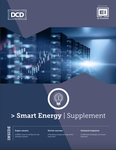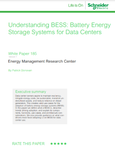As the urgency of the climate crisis demands faster and more tangible action, more companies are taking a climate leadership position by making a commitment to sustainability, as exemplified by the 24/7 Carbon-Free Energy Compact. That commitment is to match each hour of every day of demand with locally-produced carbon-free energy.
This is, for large and energy-intensive organizations such as data centers, a journey that starts with commitment, but quickly meets the complex demands of reality.
Data centers comprise three percent of the world's electricity demand - a figure that is expected to grow up to 40 percent year on year. Data centers look to match their constant, usually flat, energy demand with sources of local, renewable energy such as wind and solar. As an on-site solar installation would, at best, only meet 10-20 percent of their total energy demand from on-site generation, data centers require additional procurement avenues to meet the remaining 80-90 percent.
The supply and demand gap
The growing energy demands of data centers are quickly outpacing the market’s supply of local renewable energy. New builds of solar farms, for instance, have years-long lead times for grid connectivity, and significant space requirements which results in locations outside of the regional grid of the point of demand.
The built environment - in particular commercial and industrial (C&I) buildings like warehouses - presents a significant opportunity to enable new renewable energy generation. The UK C&I warehousing sector alone offers 350 million square meters of rooftop, expected to grow by 60 percent over the next decade. When fully utilized with rooftop solar power, a warehouse’s on-site demand usually requires only one-third of its generation capacity, leaving the remaining two-thirds available for sale. With the expected growth of this sector, warehouses could fulfill as much as 60 percent of data centers’ energy demands.
Closing the gap
Data centers need to meet their climate commitments while mitigating their exposure to the volatility of energy markets, and optimizing their operational expenses. They require access to predictable, economical renewable energy at megawatt scale. And, that energy needs to be available quickly enough to meet their commitment timelines.
For solar energy from the built environment to meet those requirements, excess generation from warehouses must be aggregated across these distributed assets. Landlords need to up-size their installation, as opposed to right-sizing it to meet the needs of the on-site tenant alone. Up-sizing of installations maximizes generation, such that there is sufficient energy available for export.
The exported energy would need to be aggregated across warehouses, treating them as a unified generation facility with a predictable volume and shape that can be matched with half-hourly data center demand. This would allow data centers to manage their balancing risks, and make a significant dent in their 24/7 matched energy goal.
Realizing the opportunity
For this gap to be closed and the opportunity of warehouses generating energy for data centers to be realized, the setup needs to be financially feasible. That is to say - the landlord generates sufficient returns, the on-site tenant of the warehouse receives an acceptable on-site tariff, and the data center buys the aggregated excess at an acceptable export tariff. For this to work, some critical components must be in place:
- Supply must be well forecasted, and matched to demand. The excess energy supply from each warehouse must be well modeled and forecasted, likely utilizing an AI-powered system, such that the aggregated energy curve is well known. That energy must be matched to the unmet demand curve of the data center to clarify the expected energy shape of the delivered supply.
- Offtake requires a fixed, long-term export tariff via PPA. A long-term fixed export PPA (Power Purchase Agreement) is required for both sides of the equation. Data centers need to lock in a rate that hedges against the volatility of the energy market, and the warehouses need a steady source of income on the export for the up-sized installation to be financially viable.
- Solar soft costs must be reduced. The soft costs involved with large commercial solar installations, large enough to generate sufficient energy for export to a data center, can often be too high for the installation to be viable. Soft costs for these installations must be reduced enough so the aggregated energy across multiple sites starts to approach and compete with the unit economics of a utility-scale solar installation.
- Visibility into delivered energy is required. At the end of the day, the energy is generated to not only save the data center money, but also meet their 24/7 CFE or other sustainability goals. Data centers need visibility into the actual energy they received and how that matched with the actual consumption their site exhibited, so transparency into energy data is critical for evaluating those goals.
A paradigm shift
Realizing the opportunity that exists between warehouses and data centers demands a paradigm shift in the energy ecosystem: toward AI-powered forecasting, aggregation, and matching, and toward fully utilized and operationally efficient generation sites. This paradigm shift is vital for the new generation from the built environment to meet the growing demand for local renewable energy.





